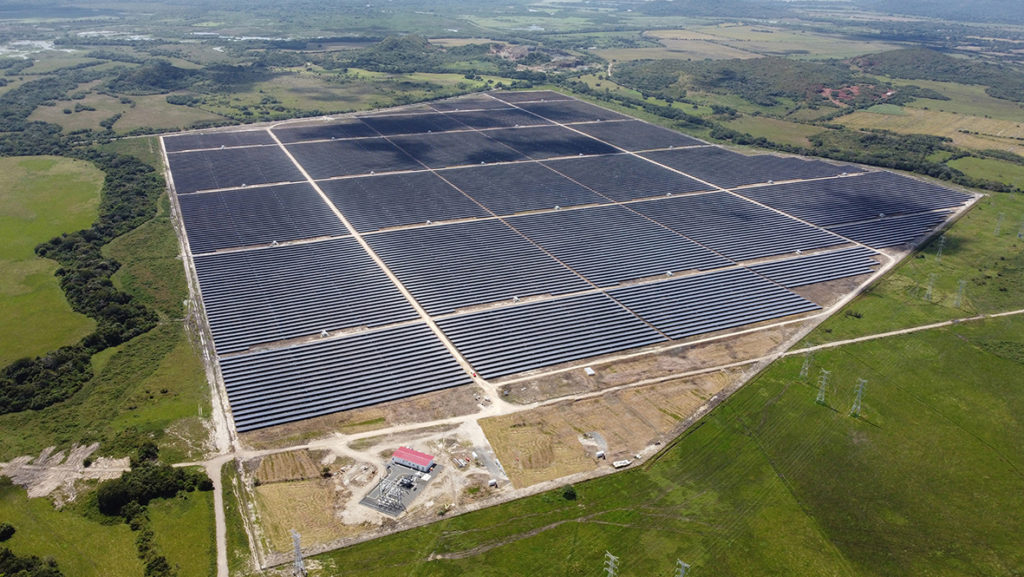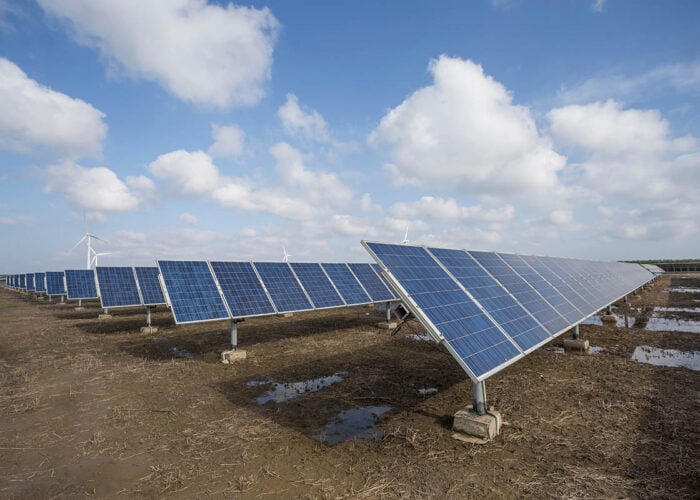
Among the Central American states, Panama has become very attractive to investors, not only because it boasts a stable government and uses the US dollar as its currency, but also due to the government now deploying a range of fiscal incentives to support PV, including an exemption on import taxes.
With solar activity in Panama growing, PV Tech Premium spoke to Fernando Zúñiga, managing director for Central America & Caribbean at MPC Energy Solutions, an independent power producer that has managed operations based in Panama for more than six years and also develops, invests in and operates PV projects. MPC is active in many central and southern American countries, including Guatemala and Jamaica.
Unlock unlimited access for 12 whole months of distinctive global analysis
Photovoltaics International is now included.
- Regular insight and analysis of the industry’s biggest developments
- In-depth interviews with the industry’s leading figures
- Unlimited digital access to the PV Tech Power journal catalogue
- Unlimited digital access to the Photovoltaics International journal catalogue
- Access to more than 1,000 technical papers
- Discounts on Solar Media’s portfolio of events, in-person and virtual
Perhaps the only restriction to PV in Panama is the small size of the country, says Zúñiga, so it does not compare to the far larger scale regional markets like Mexico, Brazil or Chile. On the other hand, there is a great deal of activity in Panama’s financial services, it has the Panama Canal to facilitate transport and logistics and is also becoming an attractive touristic destination, making it an interesting prospect for solar developers.
“We have seen in the last few years a lot of migration coming into Panama from different countries,” adds Zúñiga. “This means that the electricity demand is increasing year over year. With all these combinations, Panama is definitely a very interesting market within Central American for investors.”
Replacing reliance on coal
Panama had 522MW of installed solar at the end of 2022, according to Blackridge Research and Consulting, and by July this year PV accounted for 11% of the country’s power generation. The Panama National energy plan 2015-2050 aims for 70% of its installed power capacity to come from renewables by 2050.
Having historically relied heavily on coal for its energy needs, Panama has only had a short history with PV. The first commercial solar PV plant was developed and built in 2013 and now the Central American country has a significant and growing project pipeline that will be catching the eye of developers going forward, as interest in the Central American solar sector grows.
Since 2013, however, there have only been two energy auctions focused on solar and wind energy and to date, there have been few projects driven by the government or local distributors. On the other hand, there has been availability in the private markets under the power purchase agreement (PPA) model, driven by Panama being an open market in terms of electricity, which is one of its biggest advantages for developers.
“You can always negotiate a private PPA with a big off-taker,” claims Zúñiga.
Fiscal incentives
Incentives available for solar projects in Panama at present include an exemption from import tax, as well as the ITMBS (VAT) for the import or local purchases of equipment, parts or materials necessary for the construction, maintenance and operation of solar projects. Projects can also receive a tax credit of 5% applicable to income or corporate tax, based on the total value of direct investment in infrastructure projects for public use, such as roads or bridges, and the use of accelerated depreciation on equipment.
For the renewable power sector in particular, generation systems of up to 10MW can receive an income tax credit of up to 25% of the project investment. For generators of more than 10MW, there is a fiscal benefit of 25% and an income tax credit of up to 50% of the project investment.
The law also exempts transmission and distribution fees for smaller renewable energy projects up to 10MW, while projects between 10-20MW do not pay transmission or distribution fees for the first 10MW for ten years.
Many of these financial benefits follow the blueprint set by the Inflation Reduction Act in the US, offering fiscal incentives to develop renewable energy components domestically, and there are other ties between the Panama and US solar sectors. Last year, Arizona-based module manufacturer Universal Solar announced it would build a 600MW module manufacturing facility in Colón, Panama, with an eye on supplying to the US market to replace its reliance on Asian-made equipment.
The company states that “products from Panama are exempt from the Section 201 trade tariffs affecting Asian modules and the US has a long-standing Free Trade Agreement with Panama, which facilitates imports and exports and addresses labour and environmental protections”.
Panama’s state-owned utility company ETESA is also currently involved in discussing new incentives to avoid import duties for solar panels. Following a renewables auction in 2020, Zúñiga expects a government-led auction for renewable energy to take place at the end of this year or early next year. However, this will be open to other technologies, not only solar, though PV projects are expected to be very competitive.
Emerging PV hotspots
Most recently, projects in distributed generation are gaining ground, especially around Panama City, says Zúñiga. This burgeoning distributed segment received a major boost in July, when major Chinese manufacturer LONGi announced that it had signed a distribution deal with CELTEC, a wholesale solar distributor in Panama, for 50MW of modules to supply the growing small-scale PV market in Central America.
The Chiriquí region close to the Costa Rican border is a hotspot for large-scale solar development, as are the central regions, with Chiriquí and Veraguas both having higher irradiation than the rest of the country, suitable microclimates and good land availability at more accessible prices.
“As a developer and investor, you always want to find places that are suitable in terms of not only technical perspective and solar resources, but also on the price of the land,” said Zúñiga. “The closer you get to the cities the higher the price.”
As Panama is a small country, not being close to demand is a less expensive drawback than in many other countries. In Chile for example, huge projects are put in the Atacama desert region requiring vast transmission lines to export the power to energy demand centres in cities further south.
PV activity in Panama has predominantly been driven by international players from Spain, Germany and France, but local companies have started to set up projects, with local investment firms becoming particularly involved either by themselves or through joint ventures with international firms.
MPC has used Panama as a strategic regional base, since from Panama, company representatives can travel within a few hours to most of its projects in locations such as Jamaica, the Dominican Republic, Colombia, Costa Rica, El Salvador and Guatemala.
“A key success for a developer is to be always very close to those projects, to the authorities,” added Zúñiga. “Panama is not only a good place to have a base for Latin America, it’s also a place where you can also develop projects, I think it makes just a great combination.”







